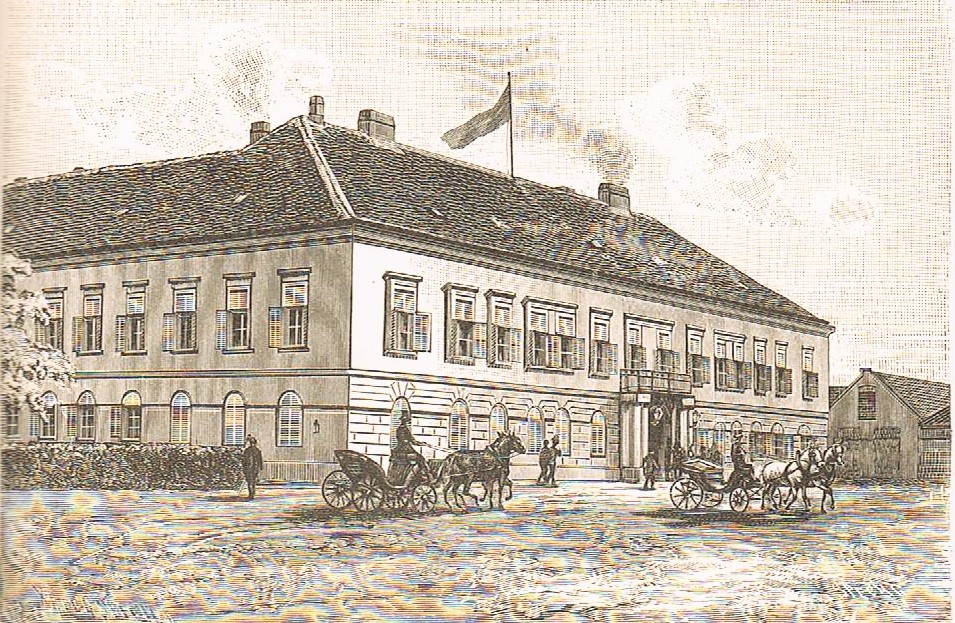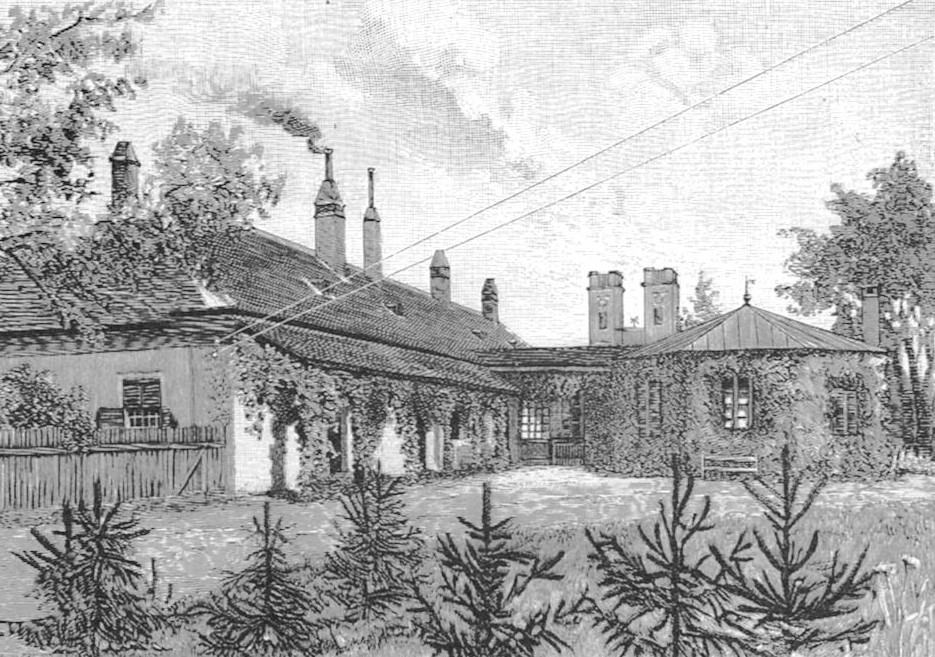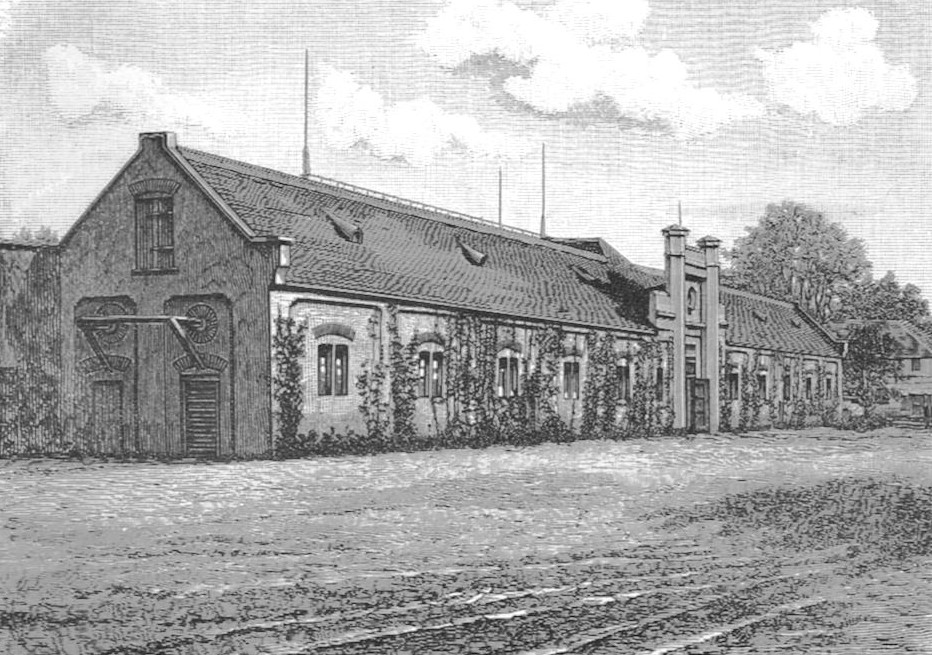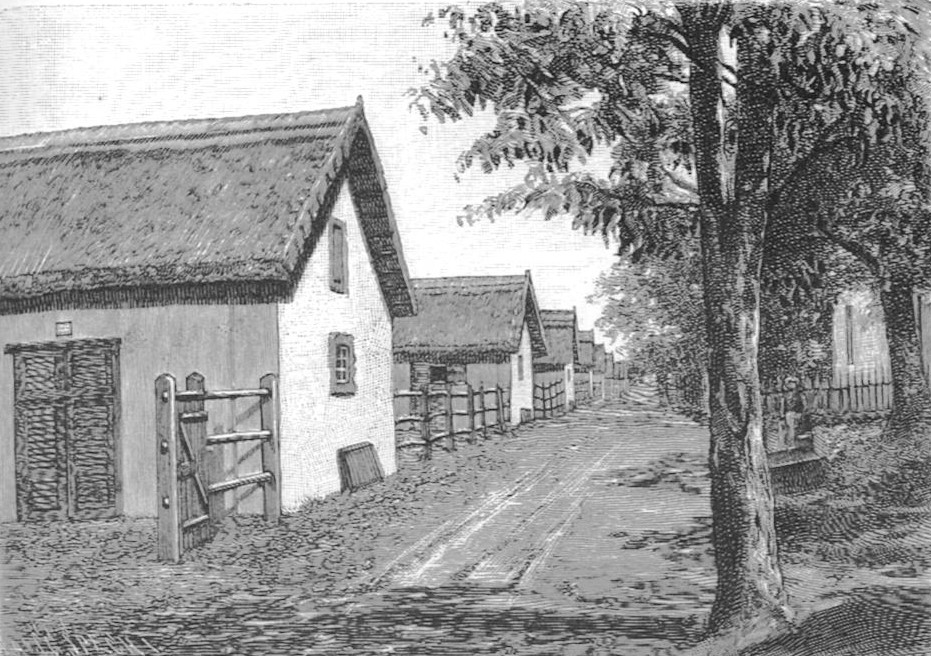State Stud Kisbér
The owner of the Austrian stud Count Casimir Batthyany was executed during the 1848 revolution and his property was confiscated by the Hungarian state. The buildings and all the other facilities were in a desolate and neglected state and with a small budget Franz von Ritter had the job to bring everything in order.
Established under State Administration on October 1, 1853 with the original idea to secure the ever-growing demand for Military remonte and provide stallions for the country's horse breeding. The stud terrain was not very clear: from two sides bounded by the city Kisber and not only that, the stud's fields and meadows were interrupted by the fields of local farmers.
Initially there was rather a mixed breed, on the one side with 22 English and Arabian thoroughbreds from the resolved csapodyschem stud Berky, the horses were not of highest quality and except for the thoroughbred stallion Deerslayer also not expensive, on the other side with different stallions from other state studs.
In1856 influenza struck, the horses of a building company were the first to be infected and then came the breeding horses. Luckily only one horse was lost, the thoroughbred stallion Grapshot died on the 31.12.
In1859 the snot broke out and 40 horses died.
In October 1862 the newly completed barn burned down and 13 mares were lost. Pula became a work stud in 1884
1869, Kisber passed into the ownership of the Hungarian crown and was placed under the new leadership of Franz Kozma. This presented a clear breeding aim to:
riding horses of the highest elegance and performance (the Kisber halfbred, although the father line consisted mostly out of thoroughbreds) also valuable thoroughbred for the racetrack. In 1870 one could see an improved breeding result.
To gain full legal possession the Hungarian crown acquired the stud for the sum of 1700000 fl. from the Batthyany family.
1860 training stables for racing are formed; these however only existed until 1867. Franz Kozma later held the performance tests on his own race track, which did not exist until around 1868. In addition, an annual auction was held, however, the horses could only be bought by members of the country who were then obliged not to sell or lend these acquired horses abroad.
After 1913 the Thoroughbred inventory was decreased to 23 mares and focus was made more on limiting the state influence on breeding of thoroughbred stallions. Between the two world wars Kisber wanted to make the Half-Blood a little stronger with the Trakehner Széplak of Tempelhüter. Széplak he there upon formed his own line. From 1921 they increasingly took half-breed stallions from their own breeding and from the stallion Furioso XXXIII Mezöhegyes (born 1916). Unfortunately, he not only inherited his good character, but also his not so good conformation.
The breeding season was between February 16 and June 16. After the birth of the foals the barn was, for cleaning and decontamination purposes, changed every two months. This was done to keep the severe lung disease away which had beforehand claimed many losses amongst the foals.
1961 Kisber was amalgamated with the Agricultural Combine Bábolna and turned again into a pure thoroughbred stud. The sport horses were moved to the studs of Sárvár Sütveny.
In 1975 there were 210 Kisber breeding mares.
From 1986, the old breed at the stud Pußtaberény was (belonged to Good Balatonfenyves) to a limited extent continued. There are no horses in Kisber.
Two of the most significant and famous thoroughbred stallions are firmly connected with Kisber.
Buccaneer, Auburn, 169cm from Wild Dayrell and the Little Red Rover Mare born 1857 in England and since 1865 in Kisber and died 04/13/1887.
One year after his sale to Hungary people began to take notice of the good breeding results of his descendants on the racetrack. Every attempt by England to repurchase him failed, Hungary of course had also noticed how lucky they were.
He co-founded the Hungarian thoroughbred breeding. Although Buccaneer was no beauty and thanks to a disturbing Ganglion not successful on the racetrack, the more were his descendants. In Hungary alone, he was the father of 371 thoroughbreds.
For his memory, I would like to quote from the book "Hungarian Horse Breeding in word and picture band 1. By Count CG Wrangel”:
"It was not until 1885, that he began to feel his age. The once so proud, confident and victorious champion was transformed into a vegetative phenomenon that no longer allowed for general compassion and respect for the memories and conditions attached to the name “Buccaneer”. It was therefore determined that "the old man“should be handed over to the “Veterinary Institute of Budapest” on April 13, 1887. The path from Kisber Pépinière-stable up to station is not very far. The old man was given an honorary escort by the stud commander and needed lots of time for this final walk to the waiting wagon. After the commander asked the accompanying Vet to make sure that “Buccaneer” should not suffer, the order was given to close the wagon door. Until then, Buccaneer was indifferent about everything happening to himself. But when the door was pushed to close, he seemed to realize that now the moment had come to say goodbye to Kisber, from the place of his work and his triumphs. He raised his grizzled head in the air and whinnied loudly and vigorously out into the balmy spring air. That was Buccaneer's final salute to Kisber. "
His best-known son is “Kisber”, a bay colt from Rataplan.
In 1874 he was sold to England and became a successful international racehorse. He was of long-term importance in the breeding of thoroughbred horses and was the starting point of an important line.
Because of his son Illo he was even integrated into the Nonius breed.
“Cambuscan", chestnut, of “Newminster” from “The Arrow of Slane” 1861 in England and since 1872 in Kisber, died 07/13/1882
He was also unsuccessful on the racetrack, therefore his descendants.
His most famous daughter is the wonder mare “Kincsem”, dark chestnut with star, 168cm * 1874, died March 17, 1886. She was undefeated in 54 races.
Her skeleton went to the “Budapest Animal institute” and her hooves, which most thoroughbreds saw only from behind, were handed over to the owners and breeders.






(26.01.2016)



